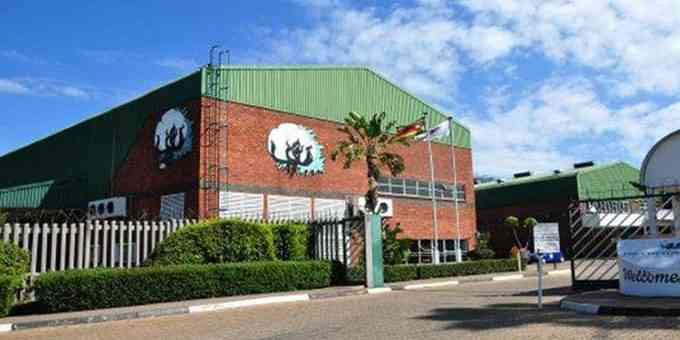THE recent inflation report released by the Zimbabwe National Statistical Agency (ZimStat) has cast a spotlight on the nation’s complex economic landscape, revealing a picture that demands careful interpretation and analysis.
At first glance, the figures might appear relatively modest, but a deeper examination unveils a narrative fraught with challenges and uncertainties that continue to shape the lives of millions of Zimbabweans.
The report’s headline figures show that Zimbabwe Gold (ZiG) monthly inflation rose by 1,4%, a significant increase from the 0,1% drop observed in July.
This uptick, while not catastrophic in isolation, signals a concerning trend that could have far-reaching implications for the average citizen.
In a country where economic stability has been elusive for decades, even small inflationary pressures can translate into tangible hardships for those already struggling to make ends meet.
To fully appreciate the significance of these figures, we must consider Zimbabwe’s unique monetary framework.
The co-existence of the ZiG and the US dollar in the economy creates a complex dynamic that affects different segments of society in varying ways.
While US dollar annual inflation remained relatively stable at 3,7% in August, up slightly from 3,6% in July, the ZiG currency faced more significant challenges.
The month-on-month inflation rate for ZiG reached 1,4% in August, gaining 1,5% on the July rate of -0.1%.
This disparity underscores the ongoing challenges in maintaining the stability and credibility of the local currency, an issue that has plagued Zimbabwe for years.
The report’s mention of a “waning parallel market exchange rate” with a mid-rate of around US$1:ZiG18 is particularly telling and deserves closer scrutiny.
This parallel market, often referred to as the black market, continues to play a significant role in Zimbabwe’s economy, acting as a barometer of public confidence in official monetary policies.
Its existence and the premium demanded on currency exchanges highlight the persistent lack of trust in the formal banking system and official exchange rates.
For ordinary Zimbabweans, this means navigating a precarious financial landscape, where the true value of their earnings and savings is constantly in flux, making long-term financial planning an exercise in futility.
While the ZimStat report provides key data, it falls short in addressing some critical aspects of Zimbabwe's economic reality.
The report does not delve into the root causes of inflationary pressures or explore the wide-ranging socio-economic impacts on different sectors of society.
It fails to address the growing disparity between official inflation figures and the lived experiences of many Zimbabweans who face rapidly rising costs in essential goods and services.
This disconnect between official statistics and everyday realities can lead to a dangerous erosion of trust in government institutions and economic policies.
Moreover, the report’s silence on the impact of the ongoing El Niño-induced drought is a glaring omission that cannot be overlooked.
This climatic phenomenon is exacerbating food insecurity and putting additional strain on an already fragile economy.
The drought’s effects on agricultural production, a key sector of Zimbabwe’s economy, are likely to have ripple effects on inflation, food prices and overall economic stability in the coming months.
The absence of this crucial context in the inflation report paints an incomplete picture of the economic challenges facing the nation.
The interplay between inflation and the day-to-day lives of Zimbabweans cannot be overstated.
For a population that has endured economic hardships for decades, even small fluctuations in prices can have profound impacts.
The 1,4% increase in ZiG monthly inflation, while seemingly modest, can translate to significant increases in the cost of basic necessities.
For families already living on the edge of poverty, such increases can mean the difference between putting food on the table and going hungry.
The report’s failure to contextualise these figures in terms of real-world impacts is a missed opportunity to highlight the human cost of economic instability.
Furthermore, the inflation report serves as a stark reminder of the need for comprehensive and sustainable economic reforms.
While the relatively low US dollar inflation rate might be seen as a positive sign, it masks the underlying vulnerabilities of the economy, particularly for those who primarily transact in ZiG.
This duality in the economy creates a two-tier system where those with access to foreign currency are somewhat insulated from the worst effects of inflation, while those relying on the local currency bear the brunt of economic instability.
Looking ahead, the lessons from this inflation report are clear, even if they are not explicitly stated.
Zimbabwe must address the fundamental drivers of inflation, including monetary expansion not supported by economic growth and the de-anchoring of inflation expectations.
Government must work to restore confidence in the local currency and the formal banking system, a task that requires transparency, consistent policies, and a commitment to fiscal discipline.
To combat the looming dangers of economic instability and potential hyperinflation, several measures should be considered.
First, there needs to be a concerted effort to bridge the gap between official and parallel market exchange rates.
This could involve more flexible exchange rate policies and measures to boost foreign currency reserves.
Second, the government must maintain tight control over monetary expansion to prevent inflationary pressures caused by excessive money printing.
Third, in light of the El Niño-induced drought, investing in drought-resistant crops, irrigation systems and sustainable farming practices is crucial to ensure food security and stabilise agricultural commodity prices.
Additionally, reducing the economy’s reliance on a few key sectors by promoting diversification can help build resilience against external shocks and stabilise overall economic performance.
This could involve incentivising investment in manufacturing, technology and service sectors to create a more balanced economic structure.
The resilience of the Zimbabwean people has been tested time and again, but without concerted efforts to address these underlying economic issues, the path to sustainable prosperity remains fraught with obstacles.
The inflation report, with its mix of cautiously optimistic figures and concerning trends, should serve as a call to action for policymakers, economists and citizens alike.
Only through a collective effort to address the root causes of economic instability, promote inclusive growth and build a more resilient economic structure can Zimbabwe hope to break free from the cycle of inflation and uncertainty that has defined its recent history.
- Lawrence Makamanzi is a researcher and writes here in his personal capacity. He is reachable at his email address blmakamanzi@gmail.com or 0784318605.





